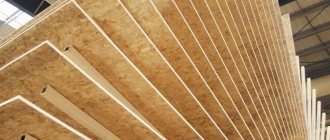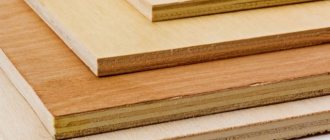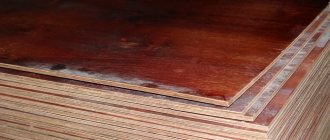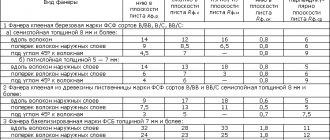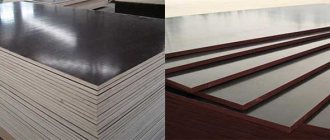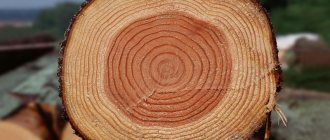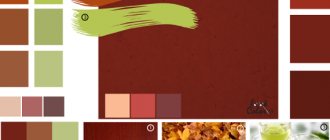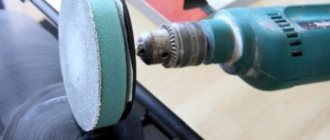Today we will talk about what kind of plywood is used in furniture production. We'll tell you how to choose plywood sheets for making various types of furniture and structures.
Plywood is more expensive than MDF and chipboard, often used in the manufacture of cabinet furniture. But this drawback is covered by two more important advantages: increased strength and the ability to produce bent elements. Therefore, plywood is just as in demand in furniture production as MDF and chipboard panels. We will tell you which plywood is suitable for making various pieces of furniture and its individual elements.
How thick is plywood?
According to GOST 3916.1-96 , plywood sheets with thicknesses of 3 mm, 4 mm, 6.5 mm, 9 mm, 12 mm, 15 mm, 18 , 21 mm, 24 mm , 27 mm and 30 mm are available on the market. But if necessary, manufacturers can create material of any thickness agreed with the customer. The material can contain from 3 to 21 layers of veneer. The thickness of the sheet determines which saw to cut the plywood with. Typically a circular saw is used for these purposes.
Acceptance, quality control
Each batch of wooden plywood is accepted according to the following criteria:
Plywood comes in 1-4 grades.
- each batch must be documented in only one document including all necessary data;
- sheets of general purpose products are checked selectively with control of strength, size and number of layers;
- the concentration of formaldehyde in plywood must be within sanitary and environmental standards;
- General purpose plywood should not contain veneer delamination or bubbles;
- humidity must comply with GOST 9621;
- the roughness of the outer surface must comply with the requirements of GOST 15612;
- The sound absorption coefficient must comply with GOST 16297, the factory hardness should not deviate from GOST 9627.1, and the thermal conductivity GOST 7076.
The product must be transported in closed transport. Transportation is carried out taking into account all transportation rules applicable to each type of transport separately. Storage is carried out on pallets only in a horizontal position in closed warehouses at temperatures from -40C to +50C and humidity not more than 85%. The warranty period is within 3-6 years.
In summing up, I would like to note that if there are high requirements for the durability of this material, it is recommended to use high-strength laminated plywood.
Features of furniture plywood
Advice! For the production of kitchen furniture, only plywood with a high level of moisture resistance should be used. The best option is FSF sheets. Otherwise, such pieces of furniture will quickly lose their attractive appearance under the influence of moisture and frequent temperature changes.
Advantages and disadvantages of plywood sheets compared to wood
Materials such as furniture board or plywood are successfully used in furniture production, and today, much more often than natural wood. As mentioned above, the main reason for this is the low price of plywood sheets.
However, in practice this material has a significant number of advantages.
Let's look at some of them:
- It consists of wood, only from thin layers (about 1 mm), and its price is an order of magnitude cheaper.
- Even large plywood sheets are shaped stable. This is achieved due to a special production technology - crossing veneer fibers.
- True freedom of choice regarding sizes.
- High lateral strength when compared with a wooden panel of the same thickness.
Unfortunately, this material has in addition to its advantages.
It also has some disadvantages:
- The mass of a plywood sheet will be greater than that of a wooden sheet of similar thickness.
- The ends have stripes, which affects the aesthetic perception of the product, since many have a negative attitude towards plywood as a material.
Lining the ends of plywood.
Advice! If you don't want the veneer layers to be visible on the ends, they can be sealed or coated with several layers of dark varnish.
- This material gives you less freedom in surface treatment, since the front layers are about 1 mm thick, so they can be “removed” with a tool if you are careless.
- Some manufacturers save on adhesives by using adhesives that are harmful to human health. Thus, purchasing plywood from an irresponsible manufacturer can have unpleasant consequences, which cannot be the case with the purchase of natural wood, even of the lowest quality.
Where is it used?
Due to the different thickness of plywood, it is used in different ways in production. For example, three-layer is more fragile. It is used in the manufacture of cabinet walls, drawers, armchairs, sofas and other elements. Five-layer material has greater strength, which is why countertops are made from it.
Laminated products are used for high-quality furniture with a beautiful front surface. They are combined with chipboard and fibreboard. Thanks to this, lightweight structures are created that do not require additional cladding. Moisture-resistant plywood is used to create surfaces for bathrooms or various types of garden furniture.
Ease of operation and wide availability determine the spread of plywood in furniture production. It is purchased by both furniture factories and private craftsmen. The flexibility of the material allows you to create interesting compositions, embodying the most daring ideas.
Use of plywood in furniture production
Depending on the brand and type, plywood is used for finishing interior rooms, making chairs, tables, chests of drawers and shelves.
Construction plywood is the basis for insulation and leveling of floors, walls and ceilings, formwork. Plywood for furniture is a high-quality type of material with high strength characteristics. Decorative - a smooth and even base containing film or paper.
Plywood is veneered using a hot press.
In order for a table, chair or cabinet to be functional and durable, attention is paid not only to the quality of the material itself, but also to the assembly technique. When assembling a product from several pieces, it is important to know several features: they begin to assemble only when the individual glued pieces have dried well, and excess glue is removed immediately after application.
The drawing also plays an important role in the quality of the product. The difference between a plywood table or a separate part of it from FSF, FC (for example, the table legs are made of plywood, and the table top is made of plastic or glass) is perfect symmetry.
When cutting plywood, take into account the power of the jigsaw. It is also worth taking into account the need for gaps for grinding sharp corners.
Processing plywood for furniture production requires the presence and observance of a number of rules:
- Grinding is done carefully so that there are no uneven surfaces and the surface of the product does not have a hitch.
- In addition to high-quality processing, strong adhesion of the parts to each other is carried out.
- Drilling holes for self-tapping screws is made in a smaller capacity than the self-tapping screw itself. This is necessary for strong maximum adhesion of the parts.
- Use wood glue for additional fixation.
- It is important to ensure an even joint between the parts.
- The material is treated with sealant and chipboard primer.
The primer for treatment should contain water, not oil.
Plywood: 85 photos of advantages and disadvantages of use. Comparison with MDF and solid wood
Any of us has encountered construction work, and many understand how important it is to approach the choice of building material as responsibly as possible, taking into account all the nuances.
This article will discuss the choice of plywood - one of the popular building materials. Plywood is a sought-after material, which attracts not only the eyes of builders, but also those who want to make something for themselves, the so-called “handmade lovers.”
Everyone may face the problem of choosing it. Like many other building materials, plywood must meet relevant product quality requirements.
Plywood is a tree, so it is unacceptable to produce it from non-environmentally friendly products. The presence of formaldehyde in it indicates a lack of proper quality and a violation of production requirements.
Plywood kitchen
Let’s start our dive into the world of plywood furniture with photos of kitchens ; here plywood has most fully revealed itself as a unique and undeservedly forgotten material in Russia.
Interest in this material has begun to return in recent years and, along with cutting chipboard, companies also offer plywood.
So, if you want to be on trend, make a kitchen out of plywood. Moreover, the Scandinavian style is in fashion now, and wood decor, along with white color, is one of the main elements of a kitchen in this style.
Kitchens made of birch or pine plywood
Birch and coniferous plywood are what you can easily find; you only need plywood at least 15 mm thick and of high grade, that is, without knots.
Birch plywood is better suited for furniture purposes because it is harder, although it may be inferior in the beauty of the pattern to coniferous plywood.
Unlike chipboard, plywood does not require edging, which you will see in all the photos below, so cutting plywood requires a professional approach in specialized workshops to avoid chipping.
| Rice. 6. Combination of white painted facades and plywood |
| Rice. 7. Holes for ventilation on the fronts of the drawers and milling of through holes for ease of opening |
| Rice. 9. An interesting combination of plywood facades with an artificial stone countertop. The upper cabinets have sliding doors, most likely made of plexiglass. |
| Rice. 10. You could say the kitchen is made of plywood in a Scandinavian style |
| Rice. 11. And again, a kitchen made of plywood with a Scandinavian style twist |
| Rice. 12. The body and front of the kitchen are entirely made of plywood |
| Rice. 13. Old-fashioned plywood kitchen design, although this one will find its fans |
| Rice. 14. Island kitchen made of plywood. Instead of an apron, masonry made of large blocks painted with white paint |
| Rice. 15. A very unusual kitchen layout made of plywood |
| Rice. 16. Pay attention to how the texture of the plywood facades is selected; it is uniform, which must be taken into account when cutting. Plus the seating area against the wall is eye-catching |
| Rice. 17. A simple kitchen made of plywood, most likely loft in design |
| Rice. 18. “Classic” design of the kitchen made of plywood, at the end of the facades there is a milled recess for opening the facades |
| Rice. 19. Kitchen made of plywood in loft style |
| Rice. 20. Not only the facades, but also the kitchen countertops are made of plywood, but only laminated |
| Rice. 21. Interesting combination of plywood facades with painted facades and colored countertops |
| Rice. 22-23. And again the play of colors in the kitchen with plywood facades |
Kitchens made of laminated plywood
Not only doll houses and playgrounds are made from laminated plywood But, unfortunately, laminated plywood is less accessible than unveneered plywood, its production in our country is less developed, and its price is steep, namely, it exceeds the cost of laminated chipboard several times.
| Rice. 24. Colored laminated plywood for furniture |
For example, the cost of matte colored plywood 18 mm thick, laminated on both sides, is about 1200 rubles/sq.m., while chipboard on average costs about 400 rubles/sq.m., unveneered plywood 16 mm thick is about 700 rubles/sq.m. sq. But in terms of strength characteristics and degree of moisture resistance, laminated plywood is significantly superior to chipboard.
We are talking here, of course, about colored laminated plywood, there is another type of laminated plywood that is used to make reusable formwork for concreting and we are not interested in it.
What is colored laminated plywood?
Colored laminated plywood is FSF plywood measuring 2.44 x 1.22 meters and thickness from 2.5 mm to 40 mm, laminated with PVC films of various densities, textures and colors on one or both sides.
The film layer prevents the penetration of moisture and is highly resistant to abrasion, chemicals, and the formation of fungi.
The ends of colored plywood are not covered with an edge, although it is available for such cases. But after cladding, visually it would not be plywood, but simply colored chipboard, and the consumer would ask - why is it so expensive?
In addition, in the photographs of both kitchens and furniture you will not see handles in the usual sense for us, because this would again be a sign of “bad taste”.
The handles for the most part are through holes milled into the face of the facade with a diameter so that you can grab it with your fingers, as well as various recess configurations. And, of course, where would there be without integrated handles, that is, milling at the end of the façade of the cutout, which you can also grab with your fingers.
Another undeniable advantage of laminated plywood is that it does not require finishing operations, such as sanding and applying transparent primer and varnish.
Other selection factors
The choice of plywood sheets for furniture manufacturing is influenced by the following factors:
- Variety Elite is the best choice. But it cannot be found on the open market, since it is sent in bulk to furniture factories on special orders. But grades 1 and 2 are also good options. To save money, you can choose 1/2 or 1/3 grades. The front side will be the one whose outer layer of veneer is grade 1. The reverse side will be wrong side.
- Thickness. For cabinet furniture, the optimal thickness is 15-18 mm. For podiums – at least 20 mm. For non-load-bearing partitions, thinner sheets can be used - about 8-10 mm. For sealing the back wall of furniture and constructing the bottom of drawers, plywood 3 mm thick is suitable. For this purpose, you can also purchase cheaper fiberboard material.
- Surface treatment method. Plywood must be sanded on both sides. To save money, you can buy unsanded sheets, but in this case you will have to sand them yourself.
When choosing plywood for furniture, also pay attention to its format. It should be enough to cut workpieces of specified sizes. Please note that the standard size of FC sheets is 1525x1525 mm. To prevent the formation of seams in unnecessary places when making large-sized furniture, it is better to purchase laminated plywood, which is produced in the 2500x1250 mm format .
Source: green-ply.ru
Indicators of water resistance of plywood sheets depending on the adhesive connection
Among the main characteristics of plywood sheets, manufacturers distinguish the type of veneer used in the base and the structure of the adhesive joint.
FSF. Robust, highly water-resistant products suitable for indoor and outdoor use. High-quality phenol-formaldehyde resins are used as the basis for the adhesive joint. The disadvantage of the material is the increased toxicity of plywood due to the increased content of phenolic toxins in the base.
FC. Reliable and waterproof plywood sheets with the addition of urea glue to the base. The product is suitable for indoor use and does not emit any foreign odors or toxic compounds. Plywood is in demand for finishing rooms, making furniture, and interior items.
FB. A building material based on bakelite varnish. The sheets are durable under mechanical loads and are protected from deformation due to changes in temperature and humidity. The structure is protected from damage due to prolonged contact with water.
Variety of varieties
The quality of the product is indicated by letters and numbers. This is usually a stamp in the form of a fraction, with the numerator showing the front side and the denominator showing the back side.
- “E” - denotes an elite grade and has impeccable qualities;
- “X” - signals the presence of coniferous species in the composition;
- “1” - this variety has no flaws;
- “2” - the sheet was repaired;
- “3” - there may be knots;
- “4” - the material may have visible defects.
Based on the characteristics of impregnation, the following types are distinguished for furniture production.
- FBA. Boards based on albumin-casein glue do not resist moisture well. Therefore, they are used to make furniture for bedrooms, hallways and other rooms with normal humidity.
- FSF. Products made with phenol-formaldehyde adhesive have good moisture resistance and are suitable for making garden furniture.
- FC. Plates with urea glue have the usual properties.
- FOF is a type of FSF with lamination only. It is suitable for high-quality facades of kitchen, bathroom and living room furniture.
Separation of plywood by surface
A number of manufacturers, in addition to the grade, additionally indicate the method of processing the surface layer when marking plywood. Plywood is divided into 4 categories based on surface type:
- Laminated. The sheet is covered with a special film for additional protection and increased strength.
- Ш2. Plywood, sanded on both sides.
- Ш1. Plywood, sanded on one side.
- NS. Plywood that has not been sanded.
Design
Plywood board is sheets of wood veneer glued together into a monolithic whole using special equipment using formaldehyde resins. For the outer layer the thickness should not be higher than 3.5 mm, and in the inner layers it should not exceed 4 mm. Plywood can be assembled using various technologies, using veneer from one type of wood or from several types of wood. According to these indicators, it is divided into homogeneous and combined, which may include various types of deciduous or coniferous cuts. The arrangement of fibers in sheets can be parallel or mutually perpendicular, and also differ in symmetry.
Plywood sheet: production features
A board glued together from 3-6 sheets of veneer is called sheet plywood. It is obtained from different types of deciduous trees from birch to alder, as well as from some types of coniferous trees.
The cost of the sheet directly depends on the type of wood. Birch plywood can surprise you with its high cost, while coniferous plywood, on the contrary, will please you with its affordable price.
Combining several types of wood allows you to reduce the cost of the material. This is done not only to save money, but also for aesthetic reasons: softwood veneer often has the illusion of relief and an intricate, beautiful pattern.
According to GOST, four types of plywood can be distinguished. Grade 1 allows for minor visual defects. The second grade does not exclude the presence of places on the plywood where glue has leaked, small cracks, or abrasions.
The presence of knots and wormholes in the sheet indicates that this is third-grade plywood. However, we should not forget that the quality of the product established by GOST also has limits: the total number of flaws should not exceed nine on one sheet. If you find a larger number of defects, uneven edges, then the plywood belongs to the fourth grade and is suitable only for the construction of industrial containers (containers, boxes for vegetables, etc.)
The dimensions of plywood sheets can vary from 1220 to 3050 mm. When purchasing a sheet, you should consider the purpose of its use. In accordance with GOST, the standard sheet length is 2440 mm, the width of which will be 1220 mm. But the most popular format is considered to be 1525x1525 mm.
Plywood sheets, in accordance with the state standard in force throughout the Russian Federation, can be from 6 to 30 mm thick. For the production of furniture, thin plywood is usually used, which does not exceed 9 mm in thickness.
If you need to make internal cladding of walls or floors, plywood with a thickness of 10 to 12 mm is ideal for you. For larger construction, it is better to take plywood from 15 mm.
An indispensable material in almost any construction is moisture-resistant plywood. It is as widespread as its usual variety. The difference between these types of plywood lies in its very name: moisture-resistant plywood can withstand exposure to moisture.
What do we know about her?
Plywood is a common material in furniture production. Typically, sheets with a thickness of 3 to 30 mm are used. The advantage of plywood over natural wood is that it is cheaper and has the same dimensions.
Production begins with the production of thin layers of wood, so-called veneers, which are subsequently glued together. Their number is always odd and starts from three. The best plywood is made from birch. This is a strong and durable natural material. It can be made entirely from one breed, or have a mixed content. At equal thickness, it is approximately 20% stronger than coniferous wood and does not release natural resins in hot weather. Its cost is higher than that of coniferous samples.
To increase strength and add moisture resistance, the plywood sheet goes through a lamination process. The presence of such a film makes it easy to clean. In addition, this is a big plus from a design point of view. The film can be of different colors and textures: walnut, beech, oak or even mahogany.
Appearance of product units
In most cases, a quality product can be determined by careful inspection. The appearance of plywood can tell a lot about its properties. So, if you look at the profile (edge) and examine the layers glued together, you can determine what type of wood it is made of. The alternation of dark and light stripes indicates a combination of pine and birch veneer, a light edge indicates the use of only birch veneer, and a dark edge indicates the use of pine.
On a note!
Some Chinese manufacturers are trying to mislead buyers by gluing only the front surfaces of the sheet with birch veneer. It is important to understand that because of this, the properties of the material practically do not change, the only thing is that the appearance of the products improves. Therefore, when it comes to finishing, you can choose this material to save money. But for more serious tasks (for example, assembling furniture) such plywood is not suitable.
The presence of external defects becomes one of the main components when determining the price of plywood. Among the characteristic defects of wood, the following should be highlighted:
- pin, fused, falling out knots;
- cracks on the surface and in the structure of the edge;
- sharp color transitions;
- scratches;
- dents;
- raised areas on the surface;
- peeling of individual wood fibers;
- inserts (patches) made of wood;
- traces of rot, mold;
- delamination;
- glue protruding along the edge.
The presence of the described defects, acceptable within the framework of GOST, in their total quantity allows us to classify the material as one or another grade, while unacceptable defects indicate that the manufacturer neglected the requirements of the manufacturing process or saved on raw materials, or the standards for storing and transporting the material were violated.
